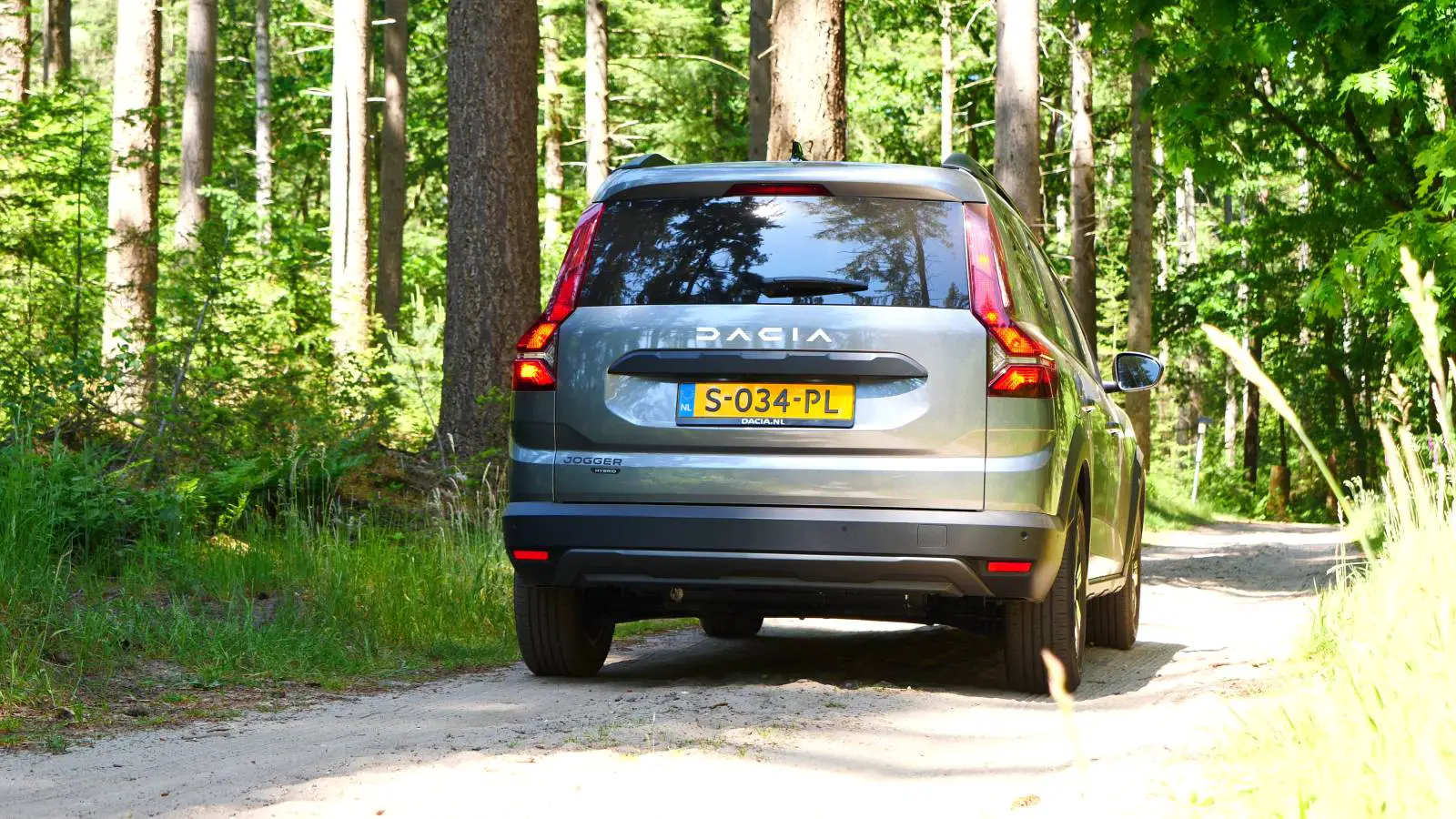Review – Dacia Jogger Hybrid 140 (2023) – How do they do it!
Good start
Within a span of less than a year, the Jogger managed to rocket to become the second best-selling car in the C-segment, second only to SUVs. About a year after the Jogger’s launch, more than 50,000 of them are already on the road. Dacia is struggling to keep up with demand; more than 80,000 orders have already been placed.
LPG
Two in three Jogger customers so far choose the TCe 100 ECO-G engine variant, which likes both gasoline and LPG. Because price differences between different equipment levels are small, most customers also choose the highest level of finish right away. Customers who want even more comfort can now opt for a Jogger with an extra pleasant powertrain.

Hybrid
In fact, Dacia is introducing its first car with hybrid technology: the Jogger Hybrid 140. The partially electrified Jogger uses a familiar Renault powertrain, which we also know from the Clio Hybrid and also the Nissan Juke Hybrid. It consists of a 1.6-liter four-cylinder gasoline engine, two electric motors and an electrified automatic transmission with four gears for the combustion engine and two gears for the electric motor. So a complex piece of engineering.
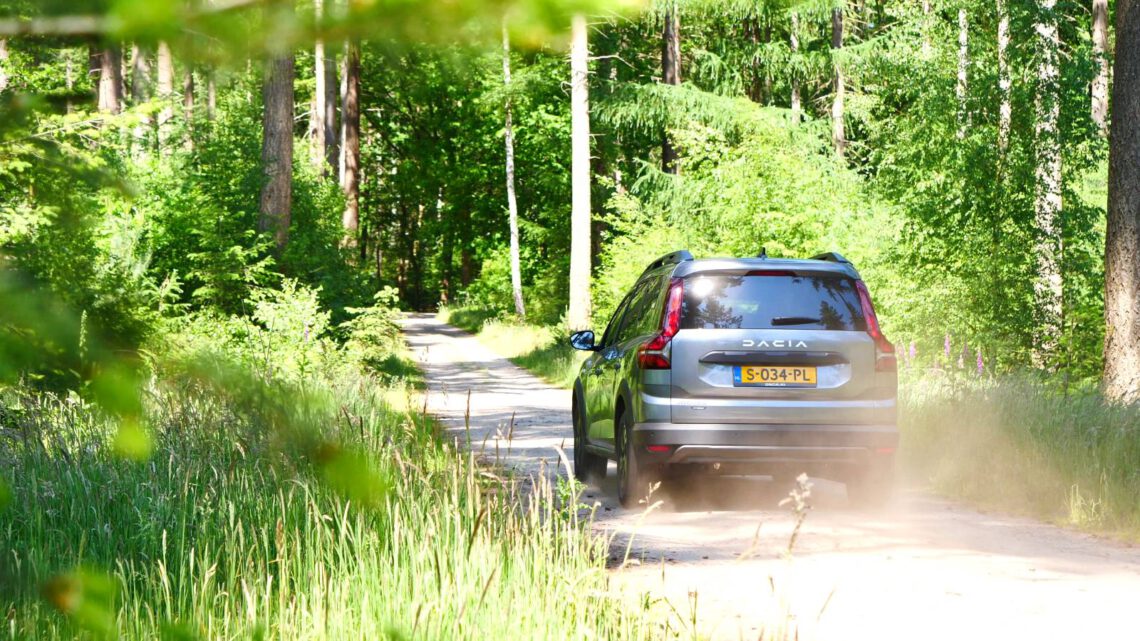
No-nonsense
When we learned back in 2022 that Dacia planned to spoon-feed this powertrain into the Jogger, we immediately got excited. In fact, the Clio and Juke are vastly improved by this Renault powertrain, and the same can be said for the Jogger. Although the Jogger, with its available power ratings of 100 and 110 horsepower, provides enough power for everyday driving, it does not immediately slap a grin on your face. Of course, that’s not necessary in a no-nonsense family car, but the Jogger Hybrid 140 proves that it can be done.
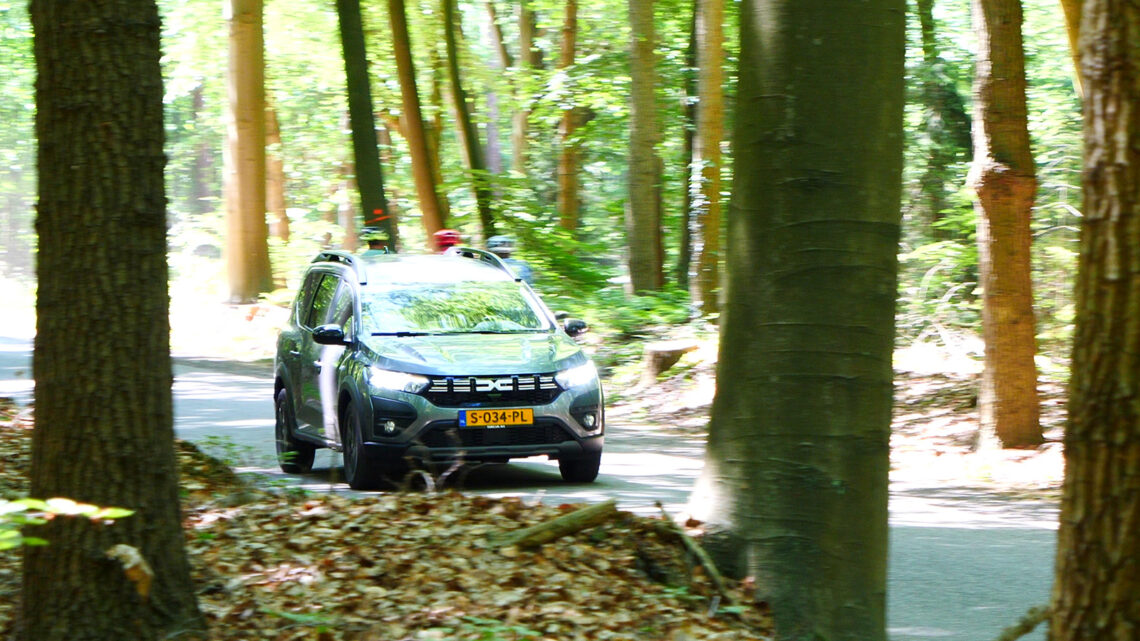
Smooth, quick and fast
The hybrid powertrain literally and figuratively boosts the Jogger’s performance, efficiency and refinement. The engine’s power and responsive acceleration are impressive. The Jogger gets off the ground effortlessly. You could even describe its acceleration ability as smooth, fast or quick. Not words you expect to hear from a seven-seat Dacia.
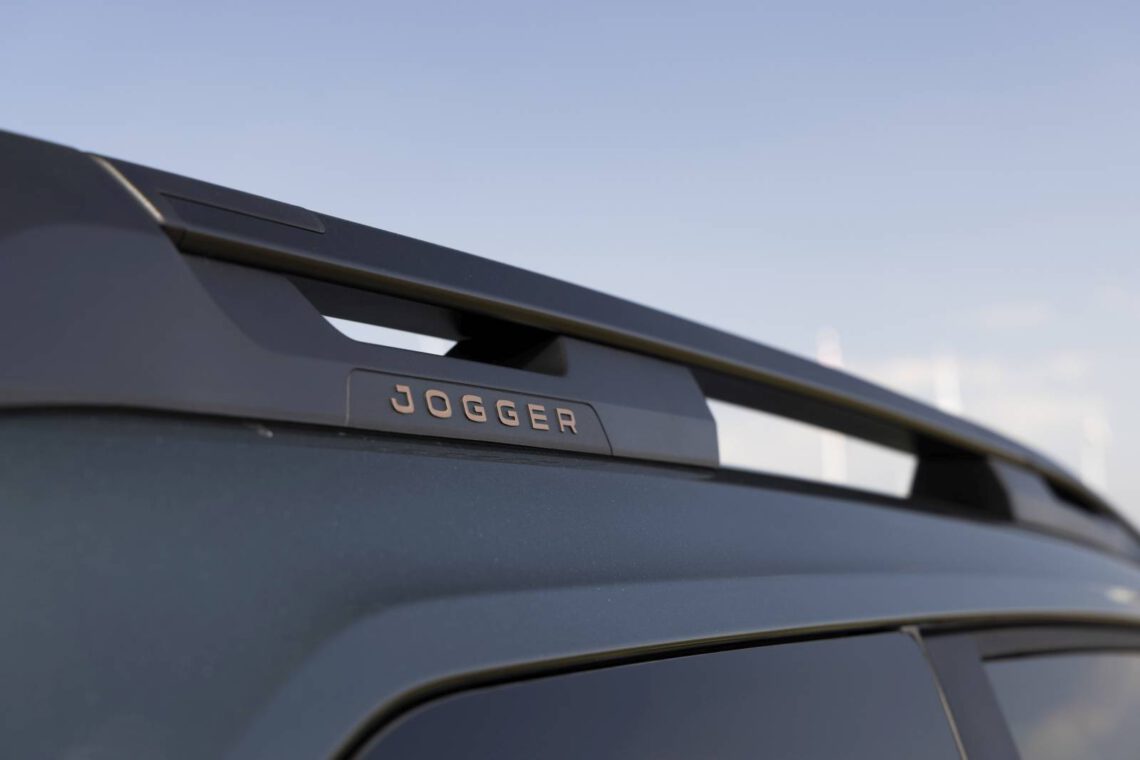
Electric driving
The Jogger always drives off electric. So from standstill, you enjoy a good dose of pulling power, due to the readily available power from the electric motor(s). Even at low speeds up to 50 mph, the electric motor provides brisk acceleration, even when you lightly touch the accelerator pedal.
At times, the powertrain provides a small smile behind the wheel. Performance goes well with the Jogger’s rather stiff suspension. The seven-seater handles corners just fine. The downside is that unevenness in the road surface does become noticeable.
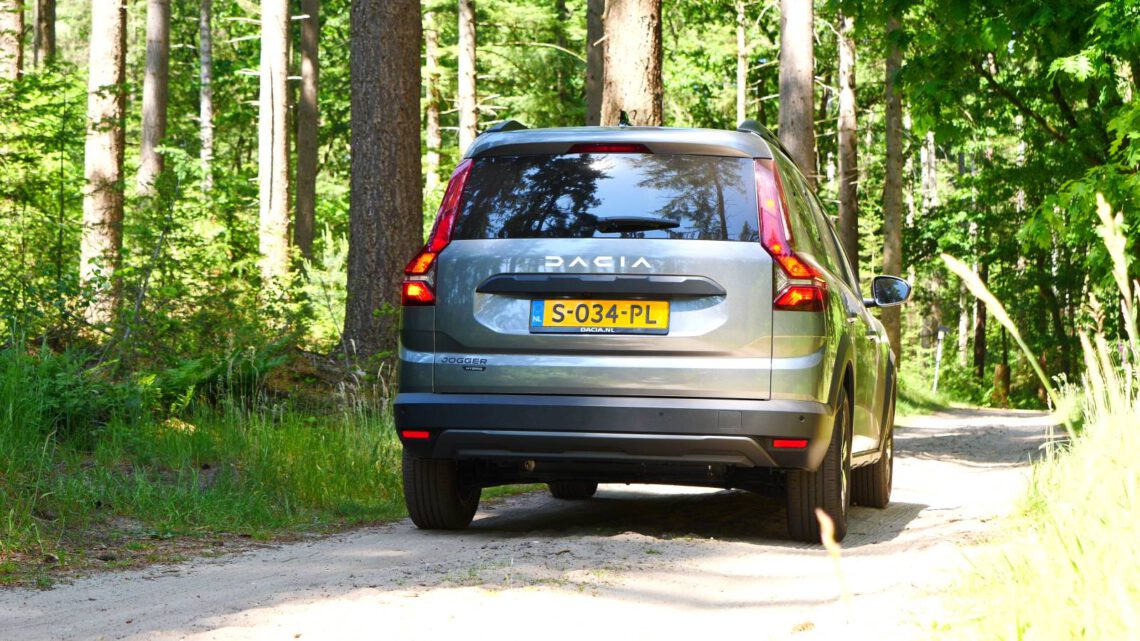
economical
The powertrain also contributes to improved fuel efficiency and lower emissions, which is good news for both your wallet and the environment. According to the brand, you can drive fully electric up to 80% of the time in the city, consuming up to 40% less fuel compared to a combustion engine.
During our testing week, we won’t be in town. W ell in the place where most Joggers will frequent: the highway and county roads. According to the booklet, fuel economy of 1 in 20.4 should be achievable. We are getting close. After a week, the trip computer reads 1 in 19. Not bad for a giant on wheels with three rows of seats.
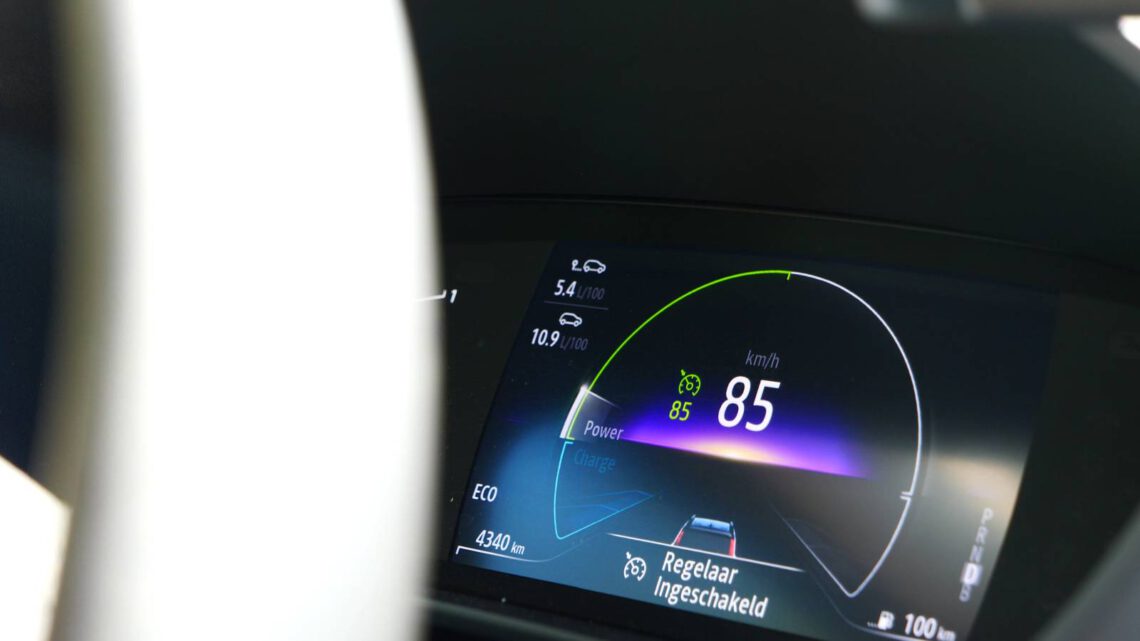
Comfortable
Even once the Jogger is on the move, the electric motor does a lot of work. It can not only drive the wheels, but also generate energy. The automatic has a so-called “B” mode. In this mode, the electric motor acts like a dynamo and can recover energy during deceleration. The electric motor in turn uses this energy to drive the wheels. Efficient, but also comfortable. After all, you don’t have to press the brake pedal as often; just taking your foot off the gas pedal often slows the car down enough.
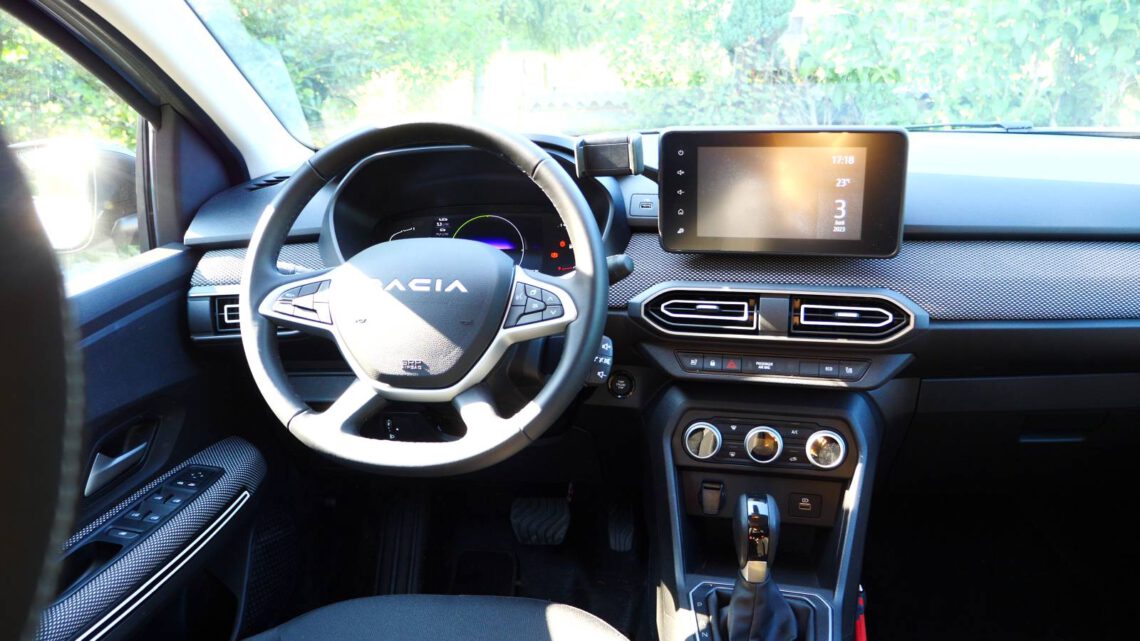
Practical
We have already written a lot about the practical aspects of the Jogger. Be sure to watch the video below if you want to see in detail all that the Jogger has to offer. In the Netherlands, the Hybrid version always comes with three rows of seats. You can easily remove the third row of seats. With the rear seats flat, you can fit 1,807 liters. Enough to carry a hefty refrigerator. Using all seats leaves 160 liters of space. Just enough for daily shopping.
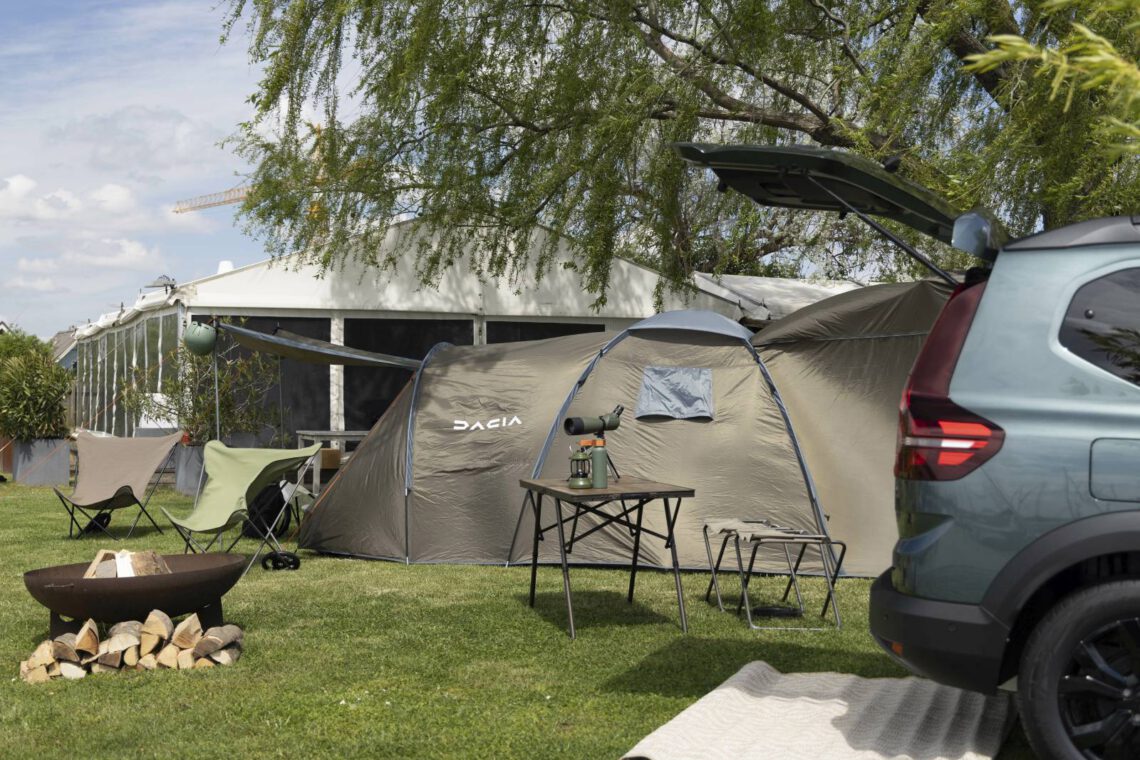
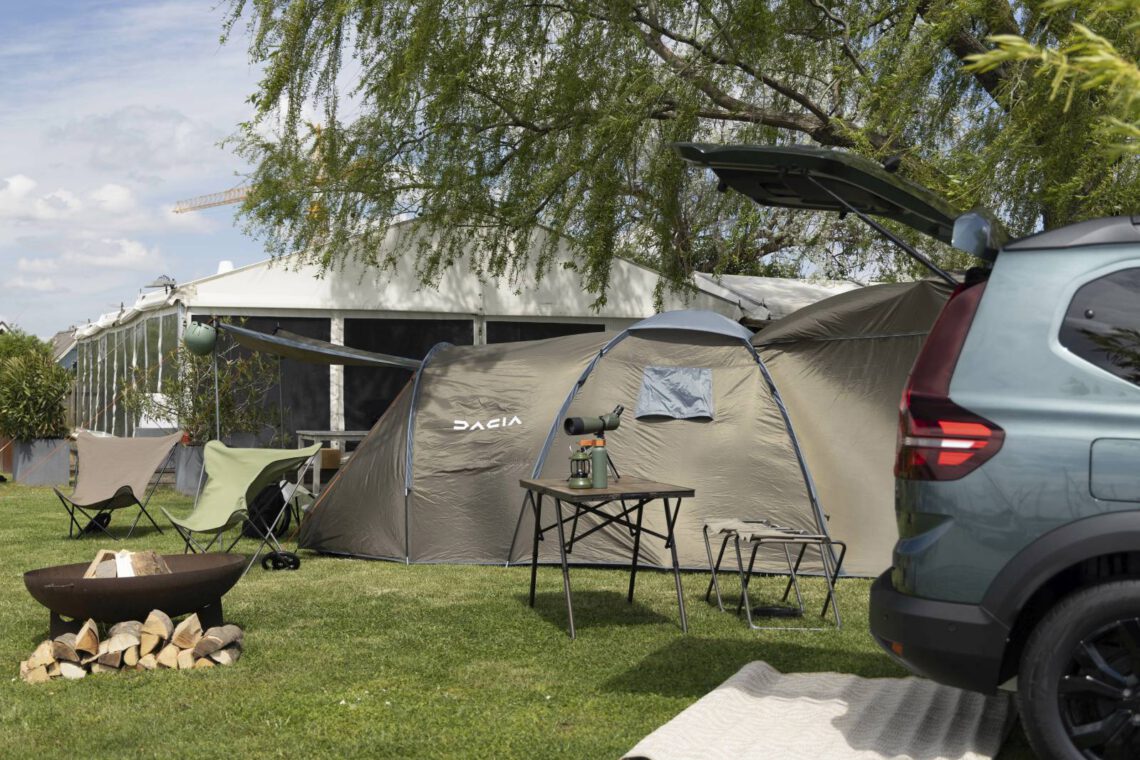

Dacia Sleep Pack
Adventurers can buy the Sleep Pack from Dacia these days, for about 1,500 euros. It consists of a wooden structure and a mattress, which can accommodate two people up to 1.90 meters tall. In addition, Dacia offers another tent that you can attach to your Jogger for a reasonable 600 euros. This way you easily transform the seven-seater into a mini-camper. In the video below, we tell you more about these rather brilliant accessories.
What does the Dacia Jogger Hybrid cost?
The Jogger Hybrid comes from 29,650 euros. The Extreme variant we tested comes from 30,650 euros. A hefty price for a Dacia, but very reasonable for a seven-seater. At a time when even a bare Volkswagen Golf costs at least 35,000 euros, Dacia still does remarkably well.
Of course, there are compromises in achieving this competitive pricing. The Jogger Hybrid lacks the finishes and advanced driver assistance technologies found in more expensive models. Still, it offers a very solid driving experience and the plenty of functionality for families who need extra seats or adventurers looking for a spacious, fuel-efficient car.

